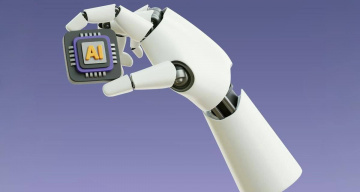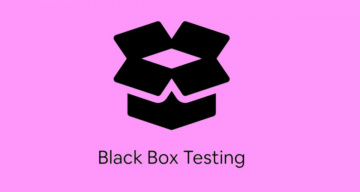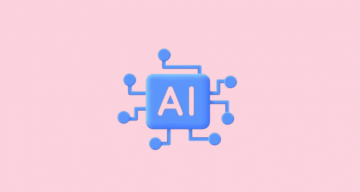With the boom of the IT industry, software development becomes more complicated. Hence, the testing process should keep pace with the development process to provide high-quality software solutions that meet customers’ wants and needs. Having that in mind, businesses of different sizes employ SAFe to quickly deliver new products to market. However, the adoption of this framework brings an array of challenges in QA and testing activities. Before delving into details, let’s overview what is SAFe framework.
Scaled Agile Framework (SAFe): Big Picture
Basically, the Scaled Agile Framework is created to help enterprises of any size to become more agile-driven. Powered with various techniques and concepts, such as Scrum, Kanban, Lean Production, Lean UX and DevOps, it gives their development teams more flexibility and helps manage some of the challenges they have when practicing Agile.
Agile VS SAFe(Scaled Agile Framework)
The key difference between Agile and Scaled Agile is that Scaled Agile was created to scale up to the enterprise level and remain agile while Agile was designed for small teams with specific roles.
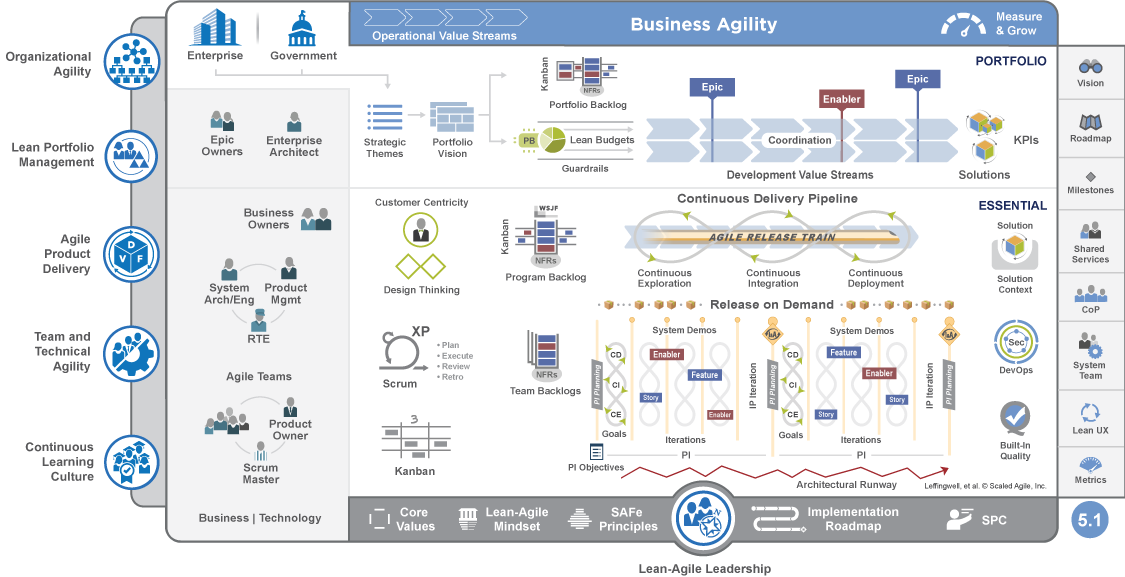
What are the four levels of the SAFe?
Team SAFe: includes minimum roles, events, and artifacts required to support Agile product delivery with the ultimate purpose of meeting the project expectations. It’s worth mentioning, that developers and QA work side by side to deliver working software of the release quality.
Key roles: Developers, Testers, Product Owner, Scrum Masters, Business Analysts, etc.
Program SAFe: applies the concept of Agile Release Train (ART) to meet the needs of UI/UX, DevOps, Architects, and the software engineers involved in the project development.
Key roles: Release Train Engineer, Architect, UX, Business Analyst, etc.
Large Solution SAFe: has a stronger focus on capturing requirements, the coordination of multiple Agile Release Trains (ARTs), and the need to provide complicated solutions to stay compliant with regulatory requirements/standards without the need for portfolio management assistance.
Key roles: Business Analyst, Stakeholder, Systems Engineer, Solution Train Engineer, Solution Architect, Solution Manager.
Portfolio SAFe: includes a stakeholder group that makes sure the program is aligned with the enterprise’s business strategy and model through portfolio management, high-level resource management, etc.
Key roles: Enterprise Architect, Chief Information Officer (CIO), Portfolio Manager, Chief Product Manager, and Chief Technical Officers.
To help you better understand how to implement SAFe, there are four additional terms you should know:
- Essential SAFe: brings together the program and team levels from the previous version to support Agile product delivery with minimal elements to succeed in implementing SAFe.
- Large solution SAFe: has a focus on implementing SAFe where multiple Agile teams are involved with additional roles, responsibilities, events, and practices aiming to deliver larger applications in order to solve complex business problems.
- Portfolio SAFe: organizes the Lean-Agile Enterprise around the flow of value via value streams to develop the right things with the appropriate level of investments in solutions in order for the portfolio to meet its strategic objectives.
- Full SAFe: represents the most comprehensive configuration and allows teams to develop large and integrated solutions that typically require 100+ people to develop and maintain.
These four terms do not explain how the “level” SAFe is implemented but show its adoption configurations. This image may help you further understand how mentioned above terms play together:
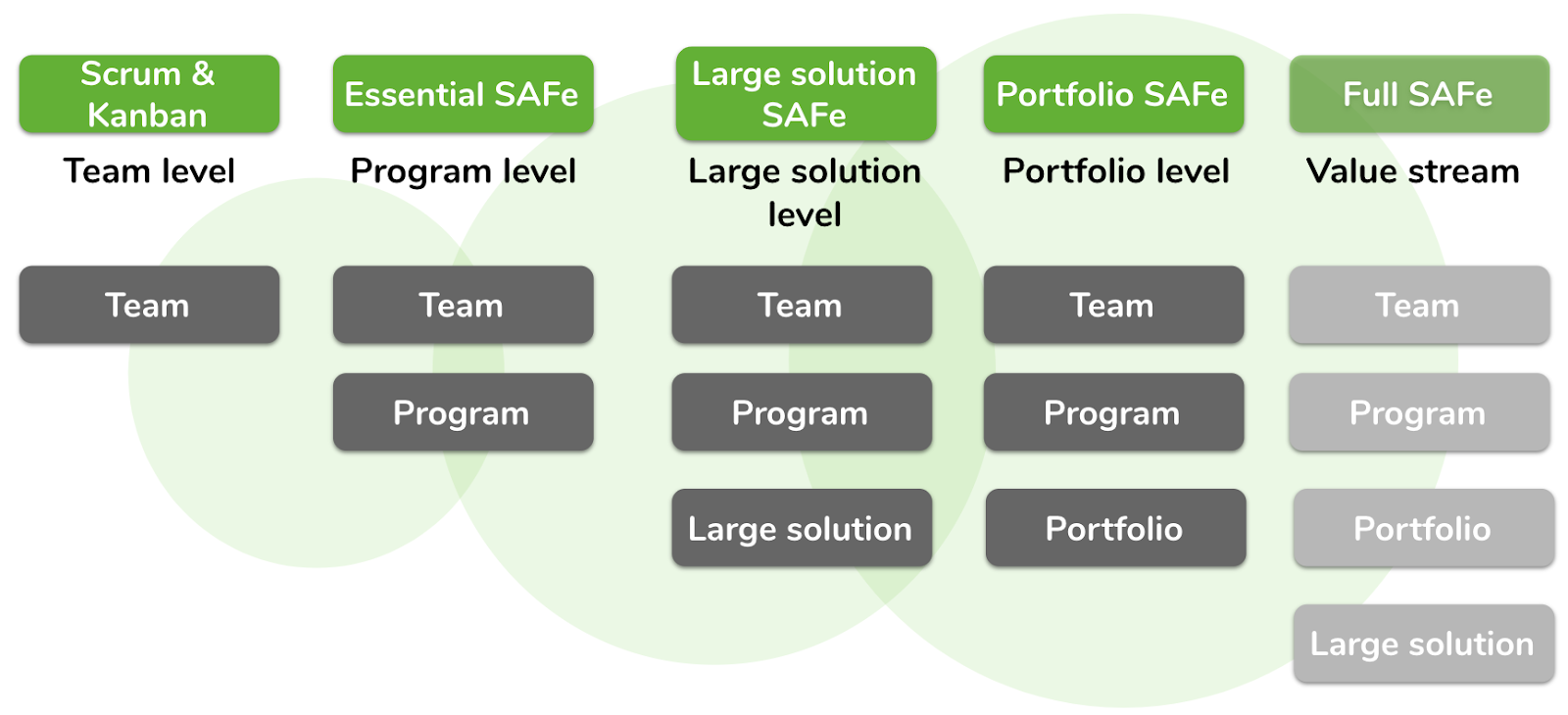
What are the core values of SAFe?
Below we are going to overview the fundamental principles of SAFe that help you drive decisions when implementing this framework.
- Alignment: means that the whole company has clear goals and purposefully moves toward them.
- Built-in Quality: integrating quality assurance into the flow, architecture and design, code, system, and release helps teams address quality issues before they turn into large-scale problems.
- Program execution: means that team members are in the know about their roles and responsibilities to deliver the expected business value.
- Transparency: information visibility simplifies the process of troubleshooting and fixing issues.
What are the benefits of the SAFe?
Here are some benefits you can reap from applying SAFe:
- It allows cross-functional teams to collaborate more effectively.
- It drives a transparency-based approach within the entire company.
- It aligns all aspects of a project with the company’s vision, mission, and goals.
- It helps teams produce high-quality products and bring them to market faster.
- It generates higher team engagement and increases productivity.
What is Testing and Quality Assurance in SAFe?
Unlike traditional development and testing, Agile testing has a focus on a “test-first” approach applied to all types of agile activities, including creating user stories, outlining the functional and non-functional requirements, hardware components, etc. To better define the intended system behavior, agile testing develops and tests software products in small increments. Aligned with the requirements in each iteration, it allows testers and developers to work in collaboration towards a common goal to drive high-quality results.
Scaled agile framework phases in testing
Generally, SAFe Agile testing includes the following phases:
- Impact Assessment: QA engineers share requirements elicited from the client and stakeholders with the agile development team to start the iteration process.
- Agile Testing & Planning: Stakeholders start defining sprint objectives, planning SAFe agile test strategy, identifying the agile testing instruments, scheduling the test activities and test duration, etc.
- Release Readiness: Teams QAs and testers check and test the features deployed by the agile software development team as well as fix bugs detected in the product.
- Daily Scrums: Regular team meetings to check project progress and daily status.
- Test Agility Review: The team reviews all the features deployed in every iteration and evaluates the project’s success with the stakeholders within the scaled agile process.
Focusing on agile testing in SAFe provides shifting towards DevOps – this means that testing is happening and more specialists from several departments as well as QA teams are involved in this process to quickly deliver software products of high quality.
Scaled agile framework testing: Challenges QA teams need to know
With the rise in the adoption of SAFe in software development, QA and testing teams face a new set of challenges. Let’s take a closer look at them below:
#1: Risk-based testing
In an agile release train, focusing on product risks at different levels is crucial when carrying out risk-based testing. That’s why you should identify product risks when specifying the features. This helps not only isolate them but make them identifiable and actionable.
To get a clear picture, it is mandatory for the team to consider product risks in the context of individual stories during PI planning before the estimation process. Additionally, it’s critical to have a solution when identifying and mitigating quality risks.
#2: Lack of test coordination
The SAFe framework enables the development and QA teams to create their ways of agile work. Unfortunately, when working on features and developing tests, they will challenge coordinating both development and agile testing activities — features have dependencies between teams. That’s why so you need to identify feature dependencies during the PI planning and be in the know who, when, and how the agile testing of the dependent features is carried out.
#3: System integration testing and end-to-end testing
Moving the system integration testing and end-to-end test to a separate team — SAFe’s “system team” is a challenge. Not only the team must make sure that a framework for continuous integration is established, but it is also responsible for the specification and execution of end-to-end testing activities. Additionally, the system team needs to take part in demos as well as have continuous involvement in the work done on the teams to shine a light on potential blind spots in testing.
What are the benefits of SAFe Agile Testing?
There are different benefits that you can gain from SAFe testing. That way, you can give a boost to your product and speed up time to market:
- It saves valuable time by eliminating the need for detailed and comprehensive documentation.
- It quickly adapts to last-minute changes or hiccups.
- It helps to obtain regular feedback from customers and end-users to make improvements.
- With regular scrum meetings, teams better address and solve issues.
Bottom line: Want to test SAFely?
If your company is striving to transition to agile, SAFe framework might be a viable option to close that gap.
With scaled Agile, companies can execute large and complex projects smoothly. However, getting your teams on the same page is more important than choosing an agile testing framework. Whether your teams are carrying out “small” automated testing on user stories or the “large” testing on the product as a whole, it is critical for them to know who, how and when this testing is performed. That’s why getting testing and development teams to move forward in the same direction while keeping stakeholders informed is incredibly challenging.
Drop us a line and we can help your teams and executive stakeholders remain on the same page and enjoy the benefits of a SAFe framework by providing scaled agile learning.


